Manor Lords is a medieval strategy city building game released in early access on April 26th and has quickly risen to #1 top seller on Steam. It is also available on PC Game Pass, Epic Store, and GOG. It was created by developer Slavic Magic and published by Hooded Horse. Slavic Magic is a Polish indie studio run by solo developer Greg Styczeń. Greg has mostly worked alone, with occasional freelance support. When you experience the detailed visuals, rich gameplay, and the complex inter-working systems in Manor Lords, it becomes apparent what an incredible feat this is.
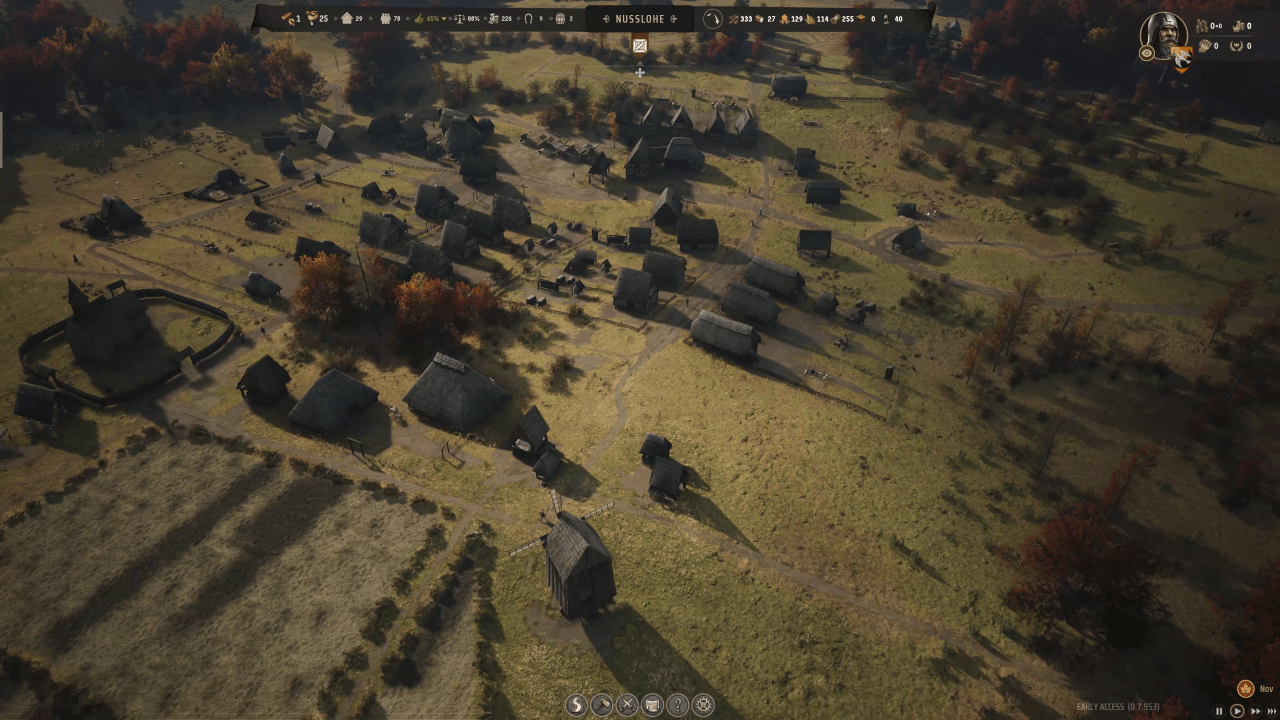
A Feifdom of Delight
Upon starting a new game in Manor Lords, you are given a few limited portraits to pick for your character. Afterwards, you customize your family’s banner which thankfully has many more options than the portrait selection. You choose a game type of either Domination, Growth, or Conquest once your lord or lady is created. Domination pits you against an AI lord with the goal of claiming all of the AI’s territory. In Growth, you need to expand your town to the largest settlement. And in Conquest, you need to claim every single unclaimed area on the map to win.
I personally found myself enjoying Growth the most. The enemy AI at present does not feel fully developed, and where Manor Lords currently shines for me was in the joy of designing and optimizing my settlements. There’s a host of other options for customizing your game, but no options for different maps or picking where you start in your assigned region of the map. This can be a little frustrating at times. I’ve started in very inconvenient locations in relation to the map’s resources, which can really set back your progress.

Manor Lords is a visual treat. As I helped my settlers take their first baby steps carving out our own little slice of medieval paradise, I was captivated watching them go to work as they cut down trees, built out their first residential plots, or started setting up market stalls. Residents will go about their daily duties and conduct them in real time, and it is fascinating to watch them.
Designing your city feels effortless and fun. The road building tool makes it easy to create organic curved roads that look great. They are also functional as they help speed up time it takes to transport materials between locations. Planning residential plots and farms using a four point grid system makes it easy to make the best use of available space while keeping everything looking organic and lived-in. I’ll be the first to admit my design sensibilities are lacking, but the further my city went along in its development, the more I felt as if I was collaborating with the game to create a piece of art. I also loved being able to zoom out and see my roadways and villages illustrated on the region map.
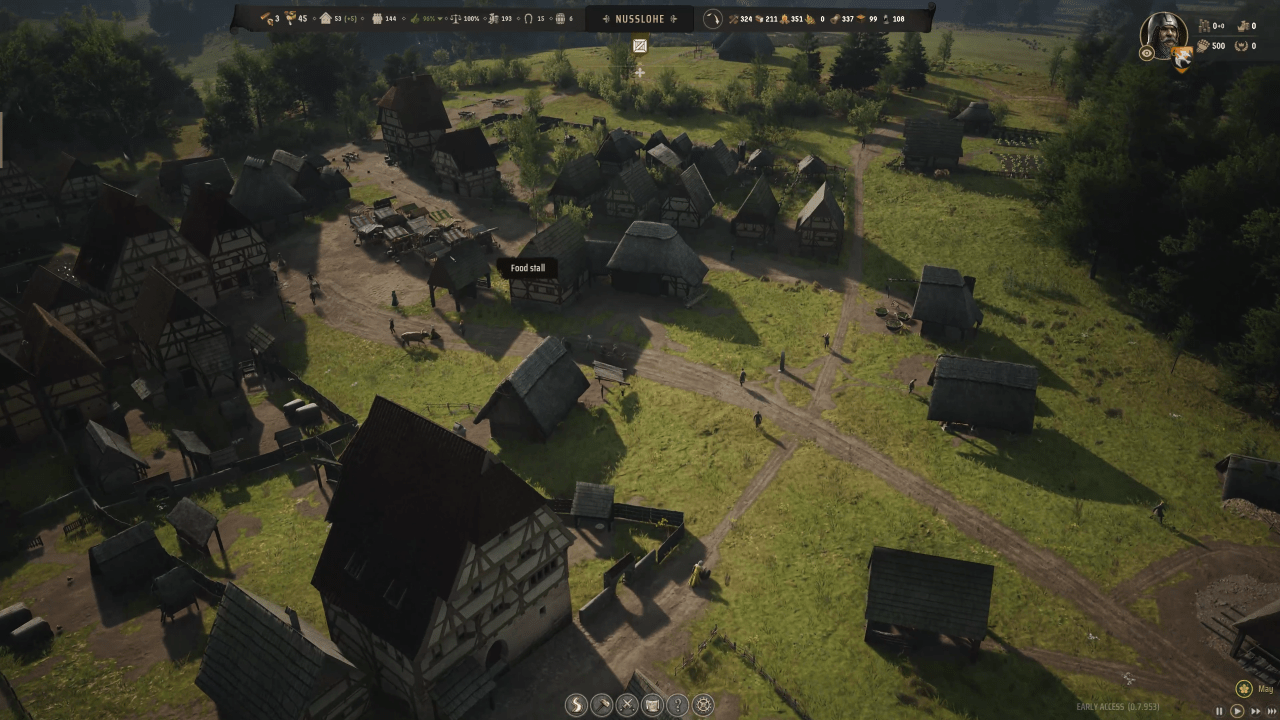
While the bird’s-eye view is great, things really shine when you get down to ground level. Not only can the camera lower to be eye level with residents, but you can also take control of your lord and walking amongst my lowly subjects. This is an excellent touch and made me feel much more connected with my settlement. I felt like an absolute stalker picking a specific villager and following them around for longer than I care to admit, just to witness what they’d do throughout their day. While entering this mode doesn’t currently serve any functional purpose, I found myself returning to it often to marvel at the visuals and what I had built. This encouraged me to think about how I built my city from an aesthetic point of view as well as thinking about its more functional aspects.
But at its core, Manor Lords is all about finding efficiencies in your production line. If you are somebody who loves to optimize and fine-tune for the maximum return, there’s a lot of satisfaction to be had. You have to consider things such as how close assigned workers live to their place of work, the distance materials need to be transported, and the positioning of industry to raw material deposits. When your town isn’t built efficiently, you can feel it in how long it takes buildings to go up or goods to make it to the market.
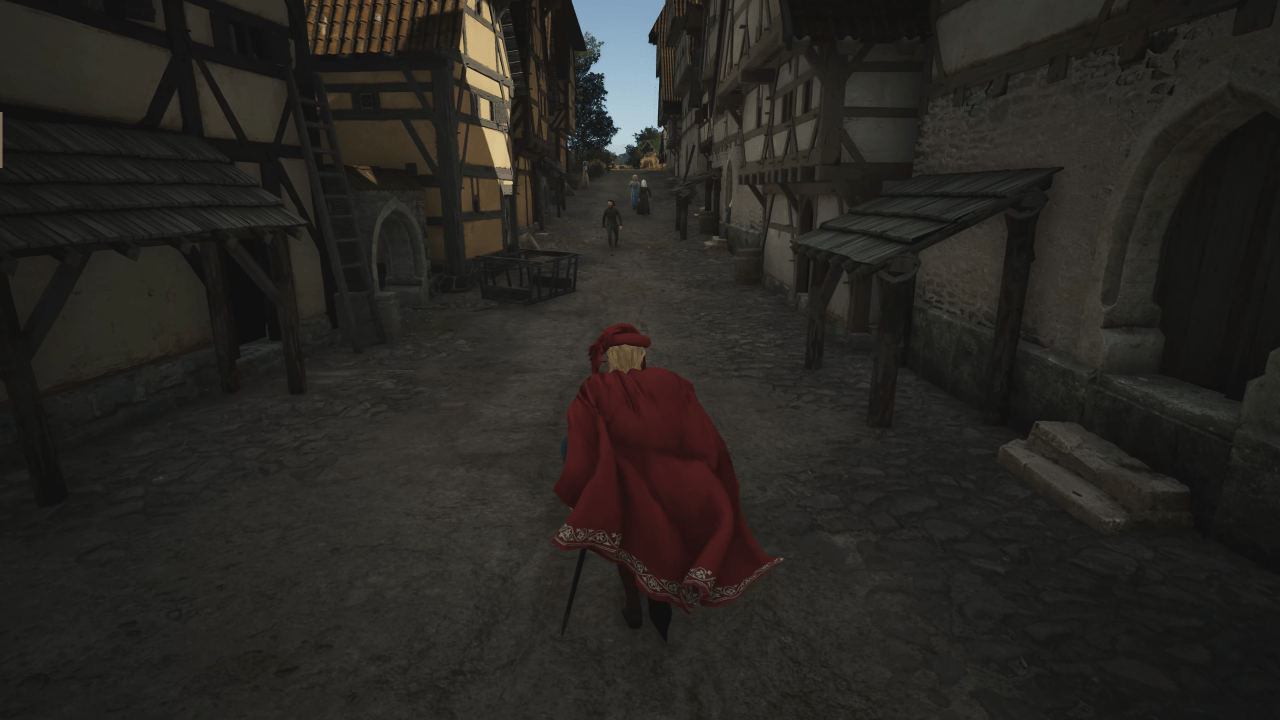
I actually found it helpful to monitor villagers and see what routes they took and how my oxen were being distributed for transporting goods to identify where there were inefficiencies. I was constantly reevaluating where my residents were working to give them the fastest commute times, and as the seasons changed, I needed to reallocate what jobs my villagers were doing. I might need more people chopping firewood during winter to make sure my fuel supply didn’t drop and fewer people tending to my farmlands. It can become quite a lot of micromanaging, especially when you are managing crops and want your workers focused elsewhere while you wait for the harvest. This made managing my town in the early stages feel much more active and enjoyable. When I went into winter with a surplus of food and fuel, I knew it was because I had taken an active hand in ensuring my villagers’ allocations and routes of production were efficient and well-planned. Once my towns grew bigger and I had more villagers to work with, juggling role assignments became less important, but still something I had to pay attention to.
Peasant Grievances
While Manor Lords offers an engaging city-building experience, it’s not without its shortcomings. The game does have some tutorial tool-tips, but it is not enough to start successfully in Manor Lords. Incredibly important systems, such as influence which is required for expanding, are never touched on. I found myself struggling on my first playthrough to expand out of my starting region. The help tab is also incomplete, with some entries left totally blank, which is a shame. Given the complex and at times opaque systems, I would have really liked more direct guidance in-game on how things worked. Instead, I found myself heading over to YouTube to learn the basics from others, which I found necessary to get the most enjoyment out of the game. I probably watched over an hours worth of tutorials to feel like I understood the basics well enough to get up and running; which is a testament to the depth Manor Lords offers even in early access.
Most of the systems are fun to learn, but are not things I would have figured out in-game. I would have lost interest before it started to make sense. Keep in mind, many of the systems are unfinished, and you will be stumbling upon many ‘coming soon’ labels during your playthrough. Unfortunately, I found the amount of unfinished content to be egregious for the $40 asking price.
There is a lot about this game that is unfinished; some of it is obvious, and some of it isn’t. For example, I invested in a smithy to build tools for my town, thinking it was a commodity I’d obviously require for further advancement at some point. The smithy is one of seven industry buildings available to construct, and all the others provide useful commodities that help advance your settlements directly. When I looked online, I found out there currently is no application for tools added yet. Thankfully, I was able to trade away what I had already created, but you’ll run into other examples like this during your playthrough. The game doesn’t always signal that a feature isn’t fully implemented, so it can feel at times like you are fumbling in the dark to see what works and what doesn’t.

Building, designing, and optimizing your town can be a lot of fun. But unfortunately, I found the AI opponents and pushing for the win condition unsatisfying. AI quickly gobbles up new territory and there isn’t currently any way to engage with them other than militarily. Early in a new game, the AI lord reaches out via a notification panel, which opens a dialogue and relationship manager that is completely unfinished. This is exactly the sort of thing I think will help make starting new games more fun than it currently is. It can feel pretty lonely when I’m playing, sometimes I’d forget the AI was even there. But I definitely didn’t forget about the raiders, a glitched invisible force of them raided and burned down my town without anything I could do in return. While bugs like this are understandable in early access, having hours of work ruined by an impassable glitch like this is a huge bummer.
To raise an army to deal with the AI you’ll need to be able to create enough weapons and armor and pull the men from your production lines which will slow progress back home. You can also hire mercenaries if you have extra money to ensure your village isn’t impacted. Warfare has real consequences as when soldiers die in combat they do not return home and the armor and weapons you have crafted for them are lost. It definitely makes engaging in combat a risky and tense affair as there is lots to lose when using your own troops.
A Feast Not Fully Cooked
Playing Manor Lords in its early access state is like being offered a grand feast fit for a king. Across the table is a cornucopia of delicious foods. Everything is laid out and presented with the artisanal touch of a master. But as you sit down and bite into what appears to be a piece of mouth-watering chicken, you chip your tooth. It is made of plastic and for display only. Okay, well how about the porridge? That is real and delicious – this dinner is getting back on track! But when you get to the potatoes, they are uncooked and inedible; they should have stayed in the oven for a while longer. This is ultimately how I felt during my time with Manor Lords. Mixed in with a lot of delicious gameplay are too many unfinished systems and mechanics. While not a surprise given Manor Lords is in early access, I do find the amount of unfinished content troubling, especially considering the game is priced at $40 on Steam. For that price I would expect a more fleshed out experience. And considering it took seven years for Manor Lords to get to its current state, I worry a full release is a long way on the horizon.
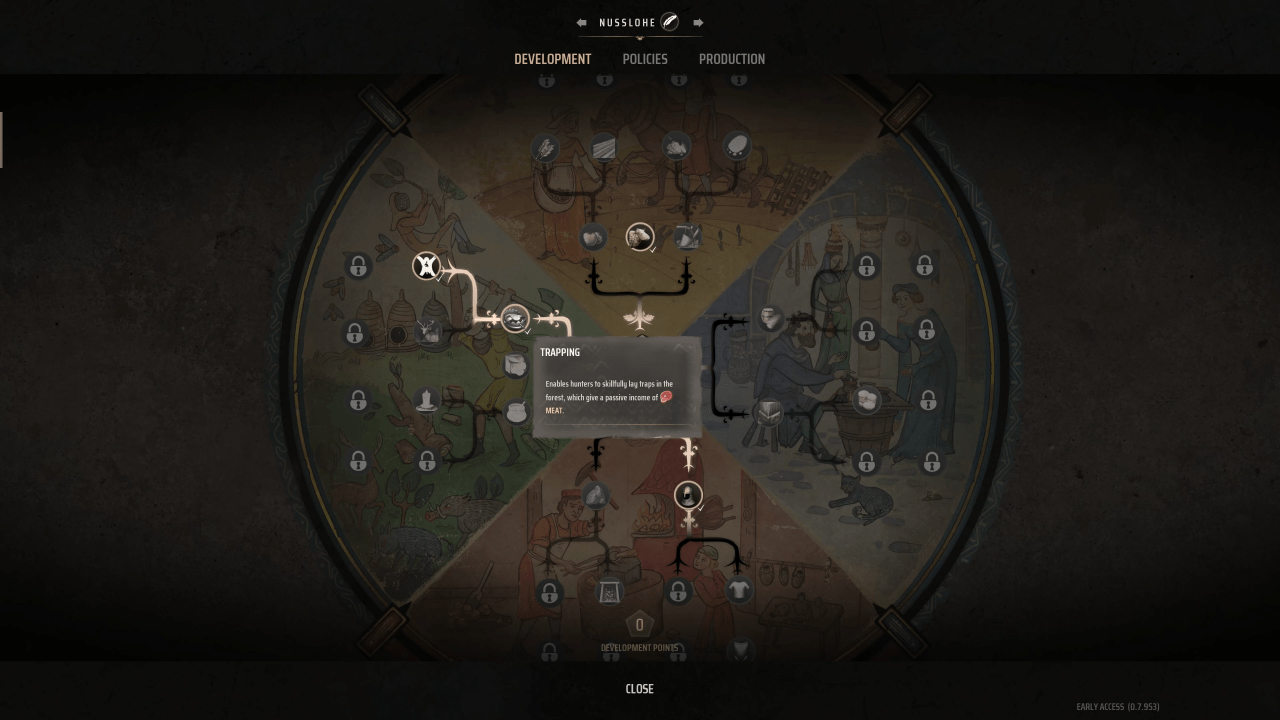
After having played around 20 hours of Manor Lords, I personally feel like I don’t have much of a reason to go back for a while. Even during that time, my experience at times felt hollow with so many systems and mechanics unfinished. There isn’t anything new for me to experience, and starting a new game doesn’t feel like it would provide enough variety at this point compared to previous playthroughs. Hopefully, when the full game comes out, new game modes, maps, and challenges will help. I’d also love to see some overarching progression that carries between games or some sort of story mode to help keep gameplay engaging.
I am happy to say Manor Lords has an incredibly strong foundation for fans of strategy games and city builders, and warrants the excitement that has been building around this title. But is it worth jumping in now, or should you wait for this potato to bake in the oven a bit longer?
With so much hype around Manor Lords I wouldn’t want anyone to think they are getting a more complete experience than it currently is. That is not to say there isn’t fun to be had, but I think the full price is unwarranted for the current state of the game. Manor Lords is an incomplete game, but the foundation Slavic Magic has laid is very promising. If you are purchasing Manor Lords, make sure you understand you are buying into a vision to help further development and not buying a finished product. My current score reflects my feeling of Manor Lords as it is now, and not the potential it has to become. It is absolutely a project worth keeping your eye on, but for most gamers I would recommend you wait and enjoy it on full release. There is something very special brewing here, but I don’t believe it is ready for the masses quite yet.

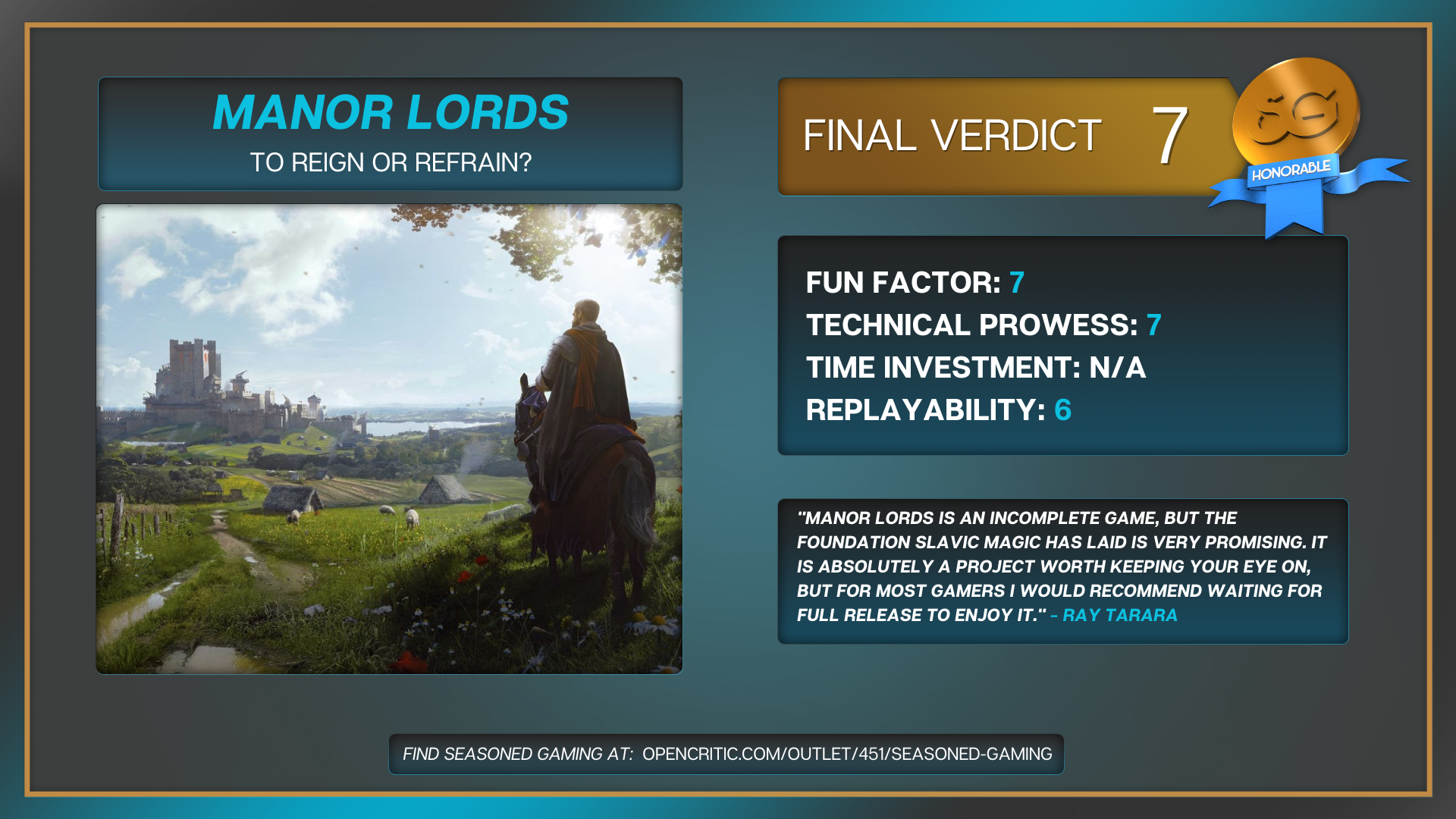



[…] Manor Lords, investing in production buildings is crucial for establishing a strong economic foundation. These […]